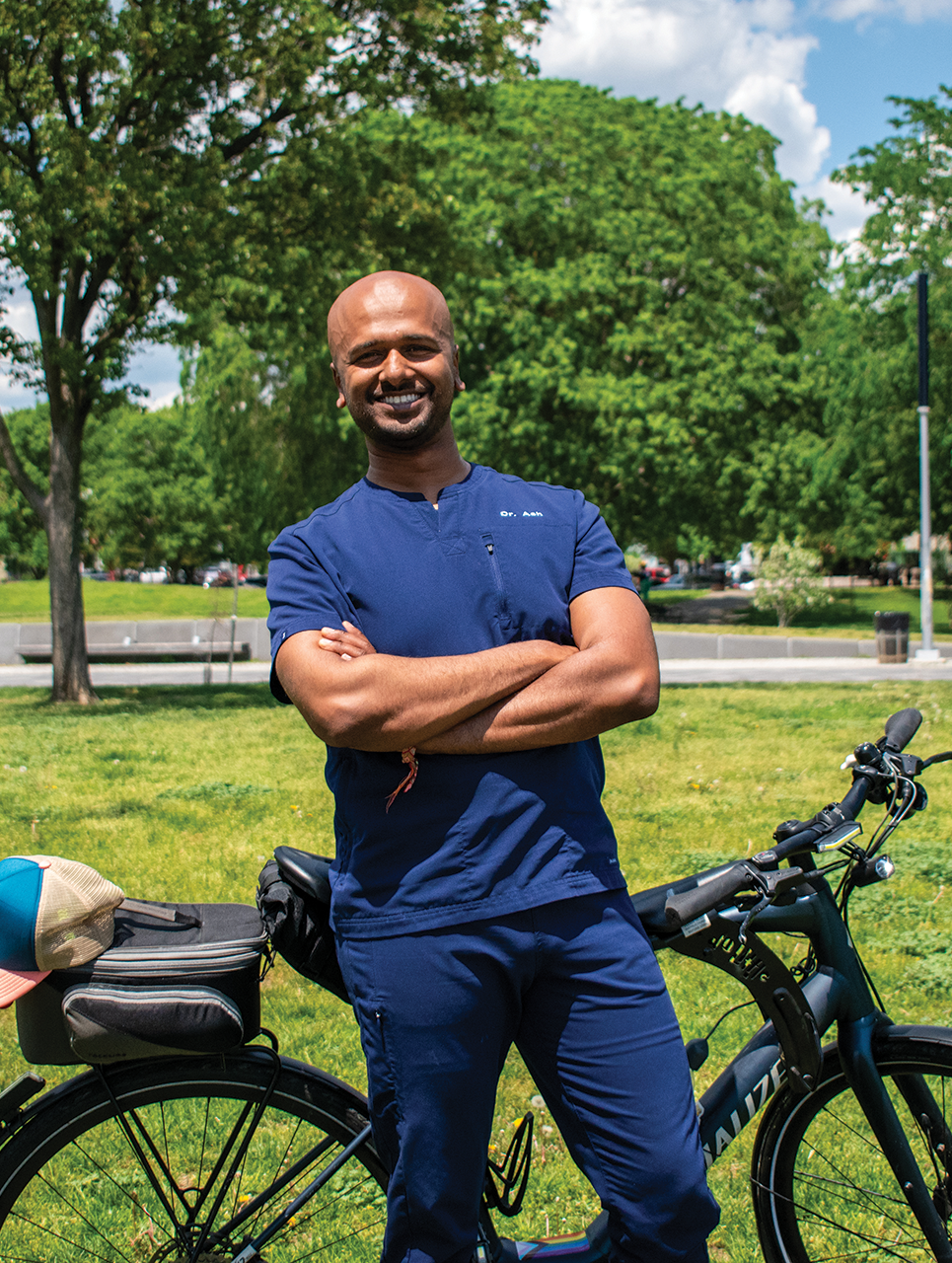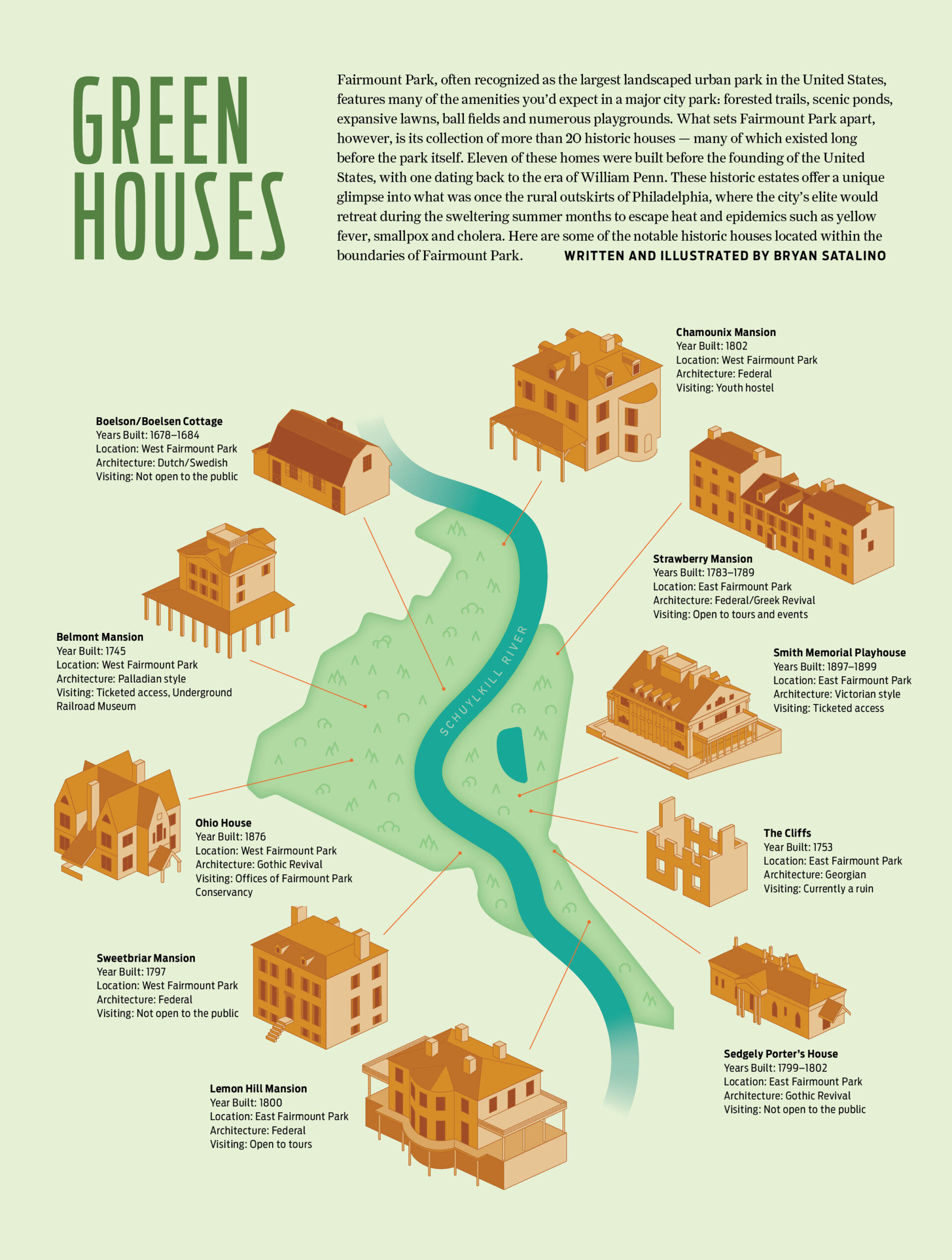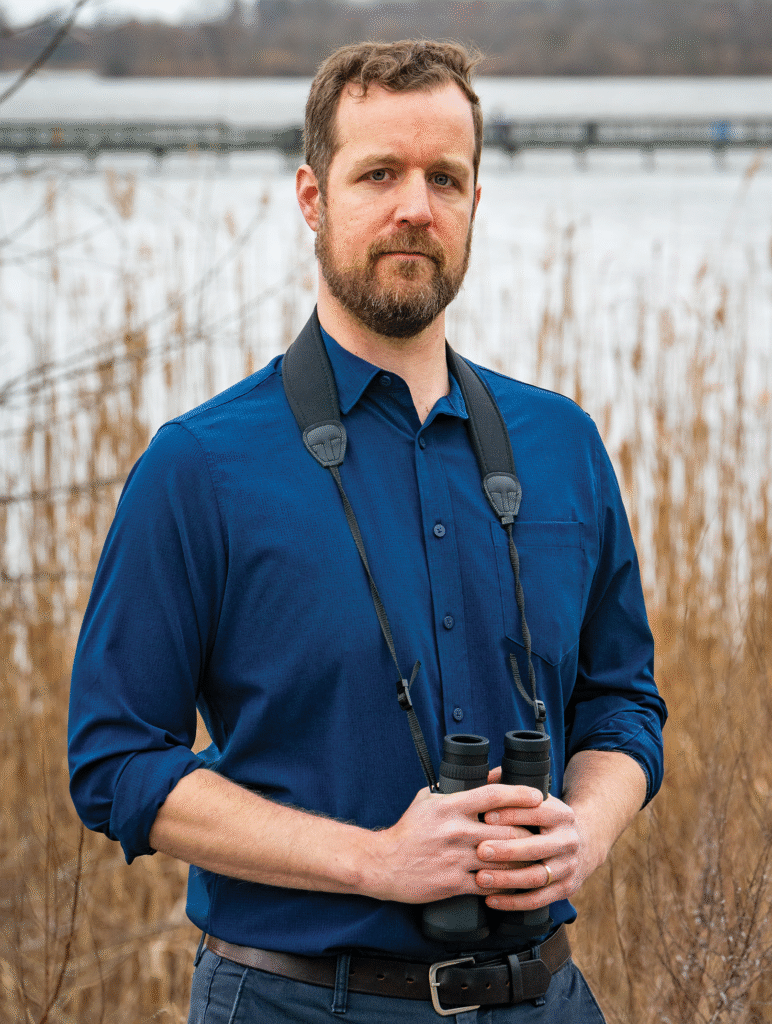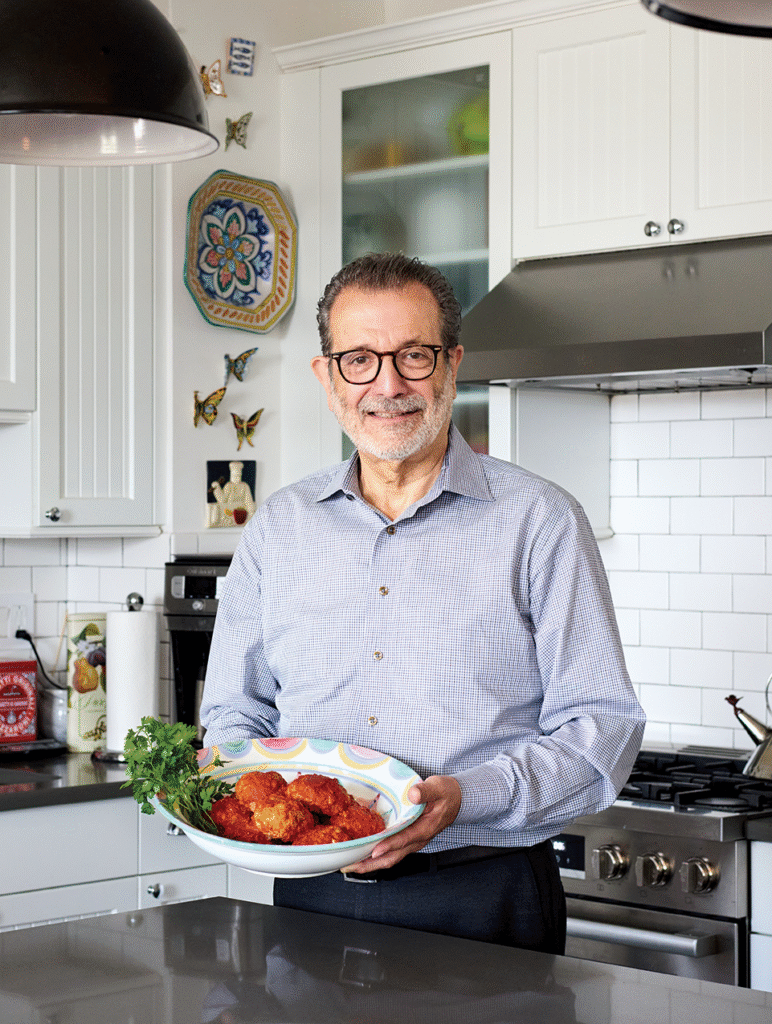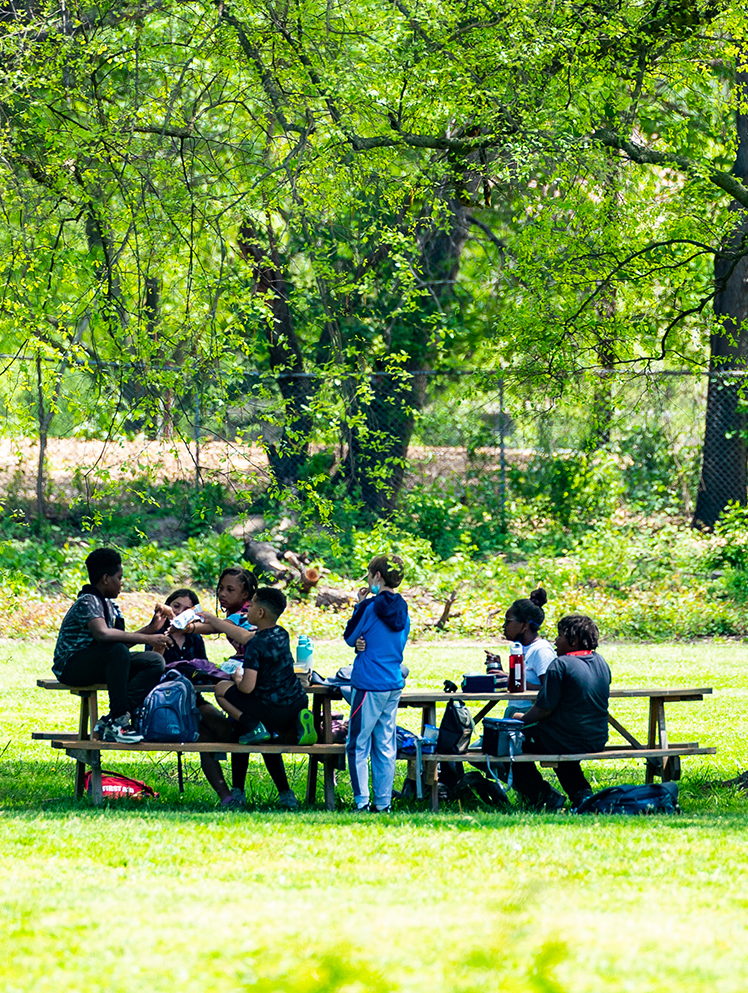For more than a decade, Philadelphia-based artist and educator Shira Walinsky has taken an interest in the lives of immigrants in the city. In 2016, she and fellow artist Laura Deutch teamed up to chronicle “47 Stories” from SEPTA’s Route 47 bus, which shuttles between immigrant communities in South Philadelphia and Olney.
Riders talked to them about just about everything: music, work, diversity, the challenges of moving to a new country. In short, their lives. But another topic, perhaps a bit unexpected, came up, too.
“I saw this great understanding and knowledge of the natural world that I didn’t have, and also the desire to get to more green spaces,” Walinsky says.
Now, Walinsky and Deutch are the vanguard attempting to solve the vexing challenge of inequitable park access in Philadelphia. And they’re doing it by trying to leverage a perennially cash-strapped resource: public transit. Their ongoing project, Getting to Green: Routes to Roots, aims to increase awareness of SEPTA services that travel by parks or near trailheads, using online mapping resources, in-person signage and organized ride-alongs. They don’t “sugarcoat” the challenges that can come along with taking transit across town, Deutch says. But for Philadelphians of lesser means, particularly for those who don’t have a car, what else is there?
We all know it can take a really long time to get to the park on the bus, but for some people, there’s no option, right? You’re not going to pay 50 bucks to take an Uber to the Wissahickon.”
— Laura Deutch, Getting to Green
“We all know it can take a really long time to get to the park on the bus,” Deutch says. “But for some people, there’s no option, right? You’re not going to pay 50 bucks to take an Uber to the Wissahickon.”
More indeed can be done — and has been done, in other U.S. cities — says Alessandro Rigolon, an associate professor of city and metropolitan planning at the University of Utah, who studies transit-to-trail initiatives across the country. A century ago, he notes, many cities specifically designed transit-to-trail services, such as a 16-stop trolley route that ran through East and West Fairmount Parks in Philadelphia from 1896 to 1946. Many of those kinds of services fell with the rise of the automobile, but some cities have started to reverse course.
A leading example is King County Metro’s Trailhead Direct, an every-half-hour summer service that shuttles riders on a bus from Seattle directly to trailheads in the Issaquah Alps, up to two hours away, for $2.75 each direction. And it’s not this gold standard of formal and affordable transit service or nothing, of course. Rigolon points to a federal grant of about $1 million for a nonprofit in Pasadena, California, to create a simple van service connecting riders from a metro station to trailheads in the 700,000-acre Angeles National Forest, currently only accessible by car.
In such places, ideas about how to better connect riders to natural spaces often start at the grassroots level, Rigolon says. Somebody in the parks space — often a nonprofit — decides to do something about inequitable access and starts pushing. In Philadelphia, Getting to Green is backed by Mural Arts and receives funding from the Delaware Valley Regional Planning Commission (DVRPC).
“There needs to be a kind of community-driven effort. It’s rare that this comes from the top down of an agency,” Rigolon says.
But higher levels of success happen when local transit agencies start buying in, he adds. So several years into the Routes to Roots project, is the idea getting anywhere?
“The relationship with SEPTA — it’s challenging. We know how much they’re going through,” Walinsky says.
On one hand, Walinsky and Deutch say they’ve made allies in SEPTA’s sustainability office. They’re currently working with the agency to put up maps at bus stops to educate and excite riders about current recreational connections. In the spring, a new poster advertising bus lines running to Fairmount Park went up at Jefferson Station. Metal signs advertising Getting to Green, complete with a QR code, have gone up on key bus-stop poles around town.
But new levels of service feel like too big an ask. With SEPTA regularly staring down financial armageddon, even preservation of the status quo is no guarantee. In prior years, Getting to Green paid to charter a special express bus on Route 7, which runs from South Philadelphia to Fairmount Park. But that is now off the table.
“They’re not doing that anymore because of funding cuts,” Deutch said. “So we’re just doing what we’ve been doing in the past, which is ‘show up at the bus stop.’ And we get a group of 15 people or so and get on.”
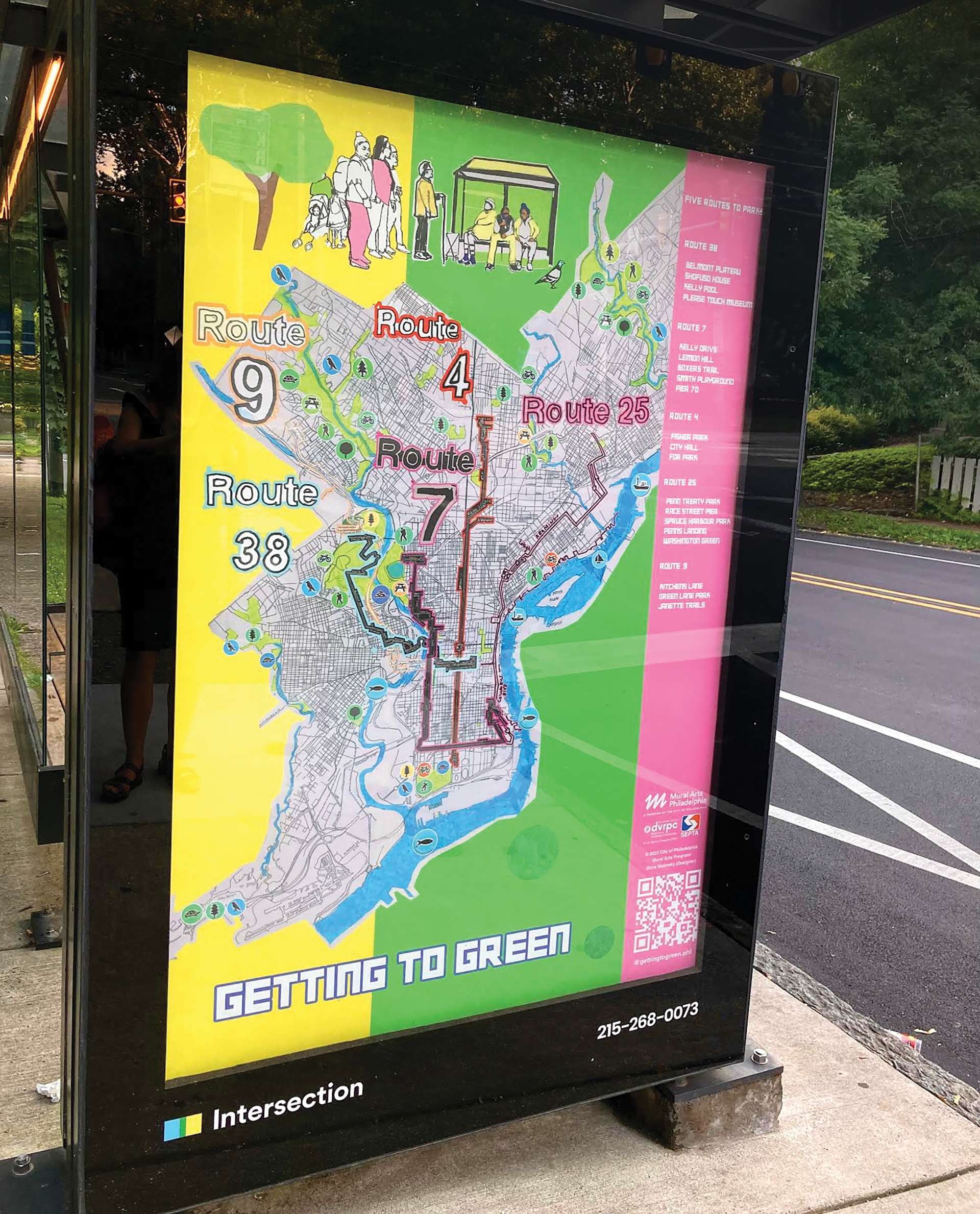
This spring, Grid sent several requests to SEPTA over the course of three weeks asking for an interview to discuss the agency’s perspective on ways to better connect Philadelphians to parks. At deadline, spokesperson John Golden emailed limited responses to select questions. For parks in the dense urban core, like Rittenhouse Square, Golden said, transit often already runs nearby without needing special service. In outlying areas with “less demand for transit,” Golden says that whether or not SEPTA runs to a park depends on what other attractions are nearby and variables such as access.
“Overall, recreation does not typically drive demand for transit service,” Golden wrote, adding that the agency has also not evaluated data from its keycard program for potential insights about the intersection of transit and recreation.
The Fairmount Park Conservancy, the city’s largest parks nonprofit, also declined an interview, citing a leadership transition-in-progress. In a statement, the organization said that “public transportation is a key factor in equitable access to parks” and cited recent designs for FDR Park’s redevelopment in South Philadelphia and West Fairmount Park’s Parkside Edge project, which it says will better connect green spaces with both existing transit stops and routes frequented by cyclists and pedestrians.
Neither the City’s Parks & Recreation Department nor its Office of Transportation and Infrastructure Systems, which oversees the Indego Bike Share program, responded to requests for an interview on the topic.
Taking a bus to the Wissahickon? Welcome to the 1%.
If there’s a poster park for the challenges Philadelphians face in accessing the outdoors, the scenic Wissahickon Valley might be it. Tucked into the Northwest corner of the city, many of the park’s trailheads are only accessible by car (or by bicycle or on foot for those in fitness-plus-proximity sweet spots).
Sarah Marley, interim executive director of the Friends of the Wissahickon (FOW), is well aware of the challenge. In the past several years the nonprofit has surveyed park users twice and found that only about 1% of visitors take the train or bus to get there.
“We would definitely like to see that increase. Because the park has really limited parking lots and on busy weekends in the high season … those are usually full,” Marley says. “This is a main priority for the organization.”
On its website, FOW currently provides information about how to use public transit to get to the park. But Marley says that the group is currently redoing its maps to better highlight the proximity of SEPTA stops, including seven regional rail stations on the Chestnut Hill West (CHW) line, which runs parallel to the park. They’ve also increased engagement with Save the Train, a coalition of dozens of neighborhood organizations fighting to maintain service on the CHW line. Marley would like to do “more of that” kind of engagement, including with SEPTA, such as potentially placing signage about the park at nearby stops.
Ultimately, Marley says she does believe Philadelphia has the “connective tissue” between park nonprofits, the City and SEPTA to foster better accessibility. But it’s “hard when your City partner is so underfunded,” she adds.
John Boyle, research director for the Bicycle Coalition of Philadelphia, is more critical. He has been impressed by efforts to connect trains to trails on the New Jersey side of the river. Over the past several years, the DVRPC has provided grant funding to use NJ Transit’s River Line to span gaps in the Delaware River Heritage Trail, part of the Circuit Trails network, he says. Sometimes that takes the form of simple signage, letting riders know about the proximity of the riverfront and trails. Other times it’s “cutting 25 feet of trail” to completely connect a station to an existing pathway.
In Pennsylvania?
“I think there’s been talk about doing that [kind of work] with SEPTA,” Boyle says. “Though I haven’t heard any proposals lately.”
I’ve seen places where [SEPTA misses] the trailhead by like a quarter mile. They can easily fix that situation by putting a stop right there.”
— John Boyle, Bicycle Coalition of Greater Philadelphia
Boyle voices even more fundamental concerns. He says he used to take his bike on SEPTA and ride it to recreational destinations but has scaled back. Nine times in 10, the conductors are accommodating and aware of the agency’s rules, but the other 10% of the time the experience is unpleasant.
“They may not have the rules correct. People will be in designated [bike] spaces, and they won’t ask them to move and just sort of leave you there hanging,” Boyle says.
Then there’s the lack of level boarding for trains, which often forces cyclists to hoist their bikes up steps and through tight spaces. The racks on the front of SEPTA buses can hold only two bikes at a time. Boyle points out that these kinds of shortfalls have been addressed elsewhere: Princeton’s TigerTransit buses have three-bike racks, and the New York MTA’s Long Island Rail Road designates specialty “bicycle trains” on summer weekends with extra capacity.
Finally, Boyle perceives missed opportunities in planning, where a SEPTA bus travels near a recreational asset but doesn’t stop there. Rigolon, the Utah researcher, calls such near misses “last mile” challenges — city planner trade lingo! — in the quest to better connect existing transit stops to trailheads. But Boyle says that in Philadelphia, the distance is often, frustratingly, even less than that. It all suggests to Boyle a lack of prioritization at SEPTA to pluck even low-hanging fruit for park access.
“I’ve seen places where they miss the trailhead by like a quarter mile,” Boyle says. “They can easily fix that situation by putting a stop right there. Or making minor pedestrian improvements: Get across the street, whatever.”
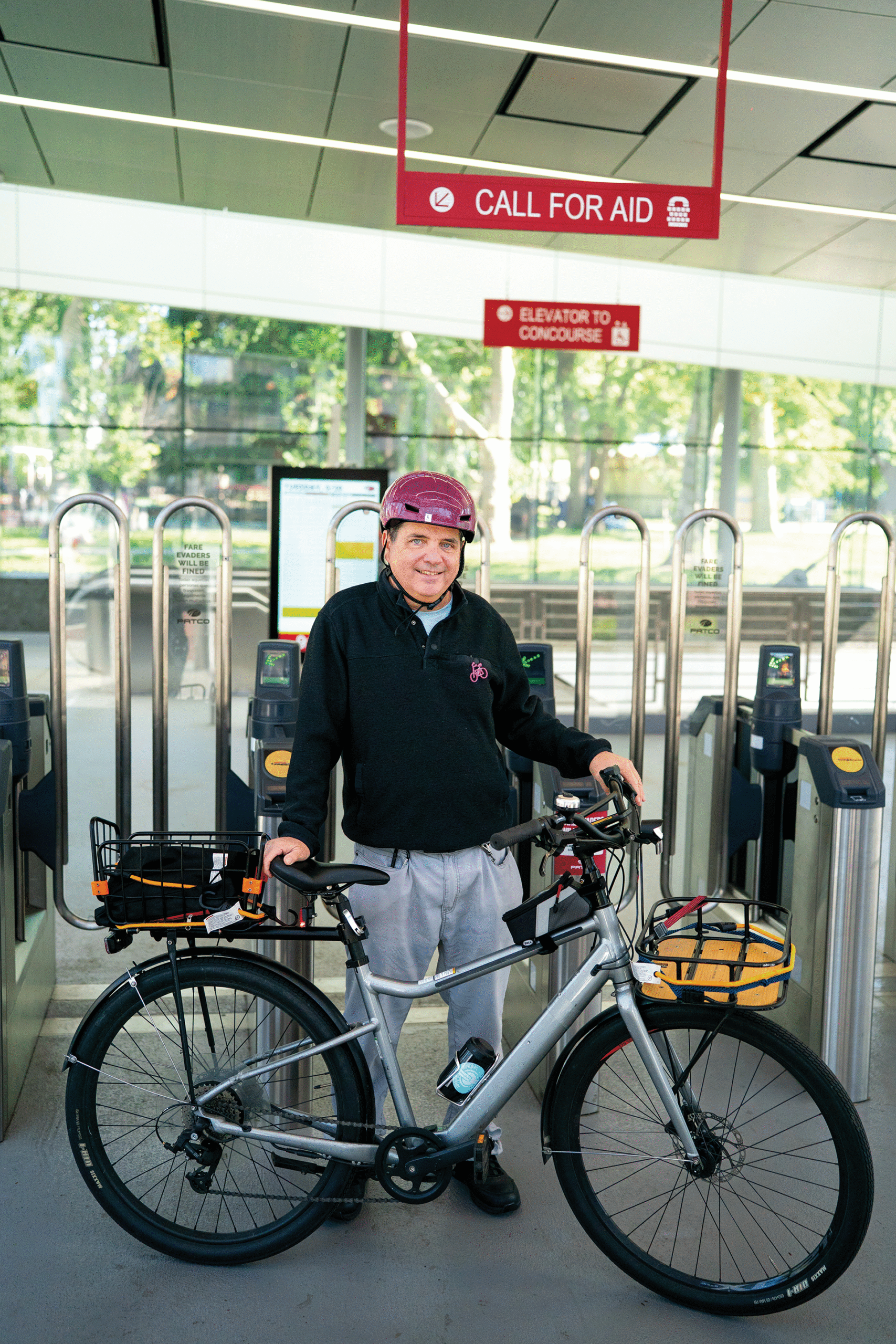
Transit-To-Trails Tips
Although advocates would like to see Philadelphia make better connections between public transit and parks, they say some exciting services already exist. Here are some of their suggestions:
Getting to Green Featured Routes
- Route 7: This hook-shaped bus route runs from Columbus Boulevard, across Oregon Avenue and up to the Art Museum and East Fairmount Park, connecting South Philadelphians to lovely open spaces.
- Route 9: This bus loops most of Chestnut and Walnut Streets in Center City before taking the Schuylkill Expressway to Ridge Avenue, all the way up to the Schuylkill Environmental Center. A ride from Washington Square in Old City to the Wissahickon Bike Trailhead at Lincoln Drive can take less than 30 minutes.
Bicycle Coalition’s Great Adventures
- Center City to New Hope: The West Trenton regional rail line runs from 30th Street Station to Yardley in an hour. There, cyclists can bike the Delaware and Raritan Canal and perhaps have lunch in New Hope, about an hour’s ride. Those in a hurry can rent e-bikes from a service station across the street in Yardley.
- Bus to the beach: The Bicycle Coalition’s John Boyle notes that NJ Transit’s 313, 315 and 316 buses depart from 30th Street Station, stop along Market and travel to Stone Harbor, Wildwood and Cape May in two to four hours.


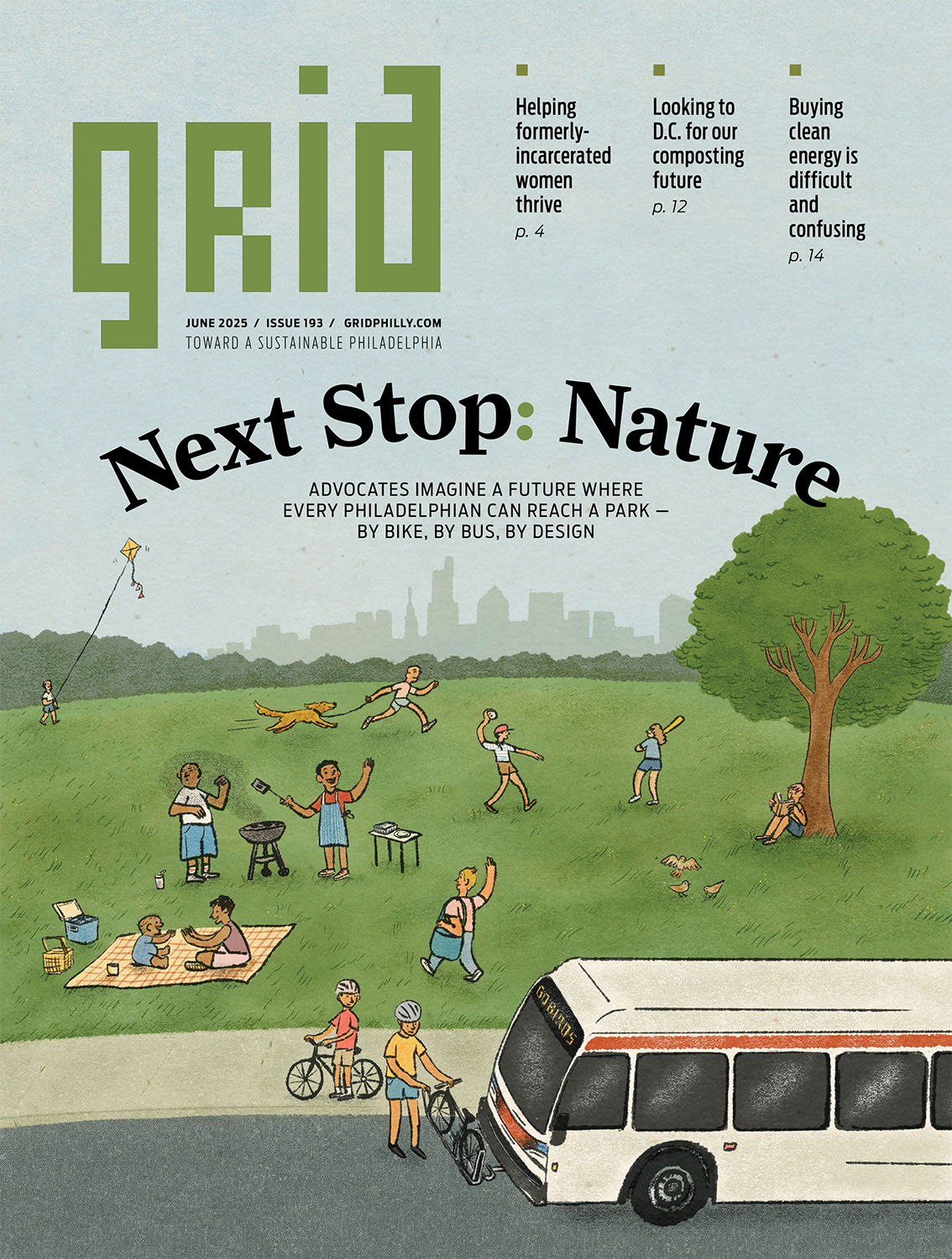
 This special section is a part of Every Voice, Every Vote, a collaborative project managed by The Lenfest Institute for Journalism. The William Penn Foundation provides lead support for Every Voice, Every Vote in 2024 and 2025 with additional funding from The Lenfest Institute for Journalism, Comcast NBC Universal, The John S. and James L. Knight Foundation, Henry L. Kimelman Family Foundation, Judy and Peter Leone, Arctos Foundation, Wyncote Foundation, 25th Century Foundation, Dolfinger-McMahon Foundation, and Philadelphia Health Partnership. To learn more about the project and view a full list of supporters, visit
This special section is a part of Every Voice, Every Vote, a collaborative project managed by The Lenfest Institute for Journalism. The William Penn Foundation provides lead support for Every Voice, Every Vote in 2024 and 2025 with additional funding from The Lenfest Institute for Journalism, Comcast NBC Universal, The John S. and James L. Knight Foundation, Henry L. Kimelman Family Foundation, Judy and Peter Leone, Arctos Foundation, Wyncote Foundation, 25th Century Foundation, Dolfinger-McMahon Foundation, and Philadelphia Health Partnership. To learn more about the project and view a full list of supporters, visit 